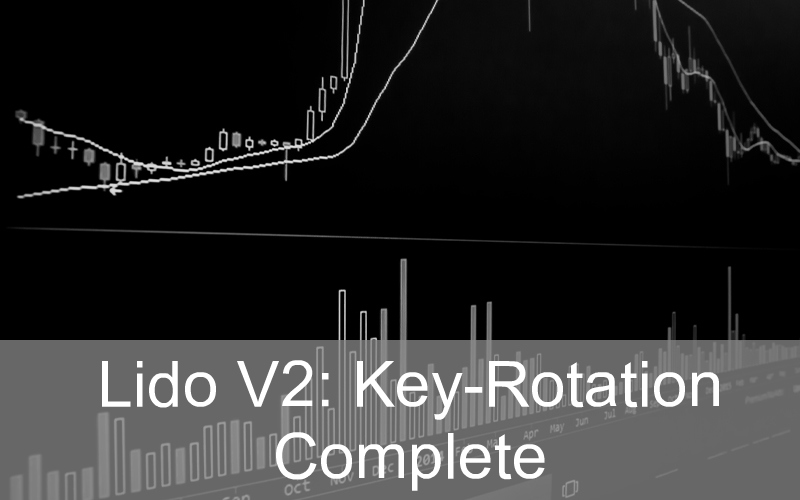Lido recently completed a key-rotation ceremony with regards to its withdrawal credentials. This ceremony marked the completion of signing messages from 0x00 to 0x01, which will only be broadcasted to the Ethereum network following the Shapella hard fork on April 12th. The key-rotation is necessary for the first 18,632 Lido validators spun up prior to July 2021, as the old withdrawal credentials (base 64) must be migrated to the new (BLS 0x01) credentials.
Back in December 2020, dc4bc project was initiated with the purpose of performing a distributed key-generation (DKG) in the form of a threshold signature. This would allow for the generation of the 0x00 credentials used by the Lido validators. In light of the upcoming Ethereum withdrawals, a key-rotation was necessary for these credentials in order to switch from 0x00 to 0x01. This key-rotation is enabled by the Shapella hard fork.
At the same time, generating 18,632 signatures using the original dc4bc software would have taken a long and tedious process, hence a set of functions were implemented to the software to enable a batch-signing process. This allowed for relevant contributors to make auditing fixes regarding the software, which Sigma Prime proceeded to do. The audit came back with 8 fixes, with no critical or high-priority issues.
Eventually, the signing of all 18,632 messages was completed last Friday, albeit they will only be broadcasted after the Shapella hard fork is activated. Once the hard fork is active, all Lido validators on Ethereum will be working on 0x01 credential system.
To summarize, Lido V2 update's withdrawal key-rotation ceremony has been completely successful. All withdrawal credential messages have been signed from 0x00 to 0x01, and are ready to be broadcasted once the Shapella hard fork goes live on April 12th. This key-rotation process is of great importance to Lido as it makes sure that all Lido validators on Ethereum work with the 0x01 credential.
 Victoria Lopez
Victoria Lopez
- 2023-04-05
Lido V2 Update: Withdrawal Key-Rotation Successful
The Key-Rotation Ceremony for Lido's V2 Update on Ethereum is a success, with 18,632 messages from 0x00 to 0x01 being signed and ready to be broadcasted once the Shapella Hardfork goes live on April 12th.

